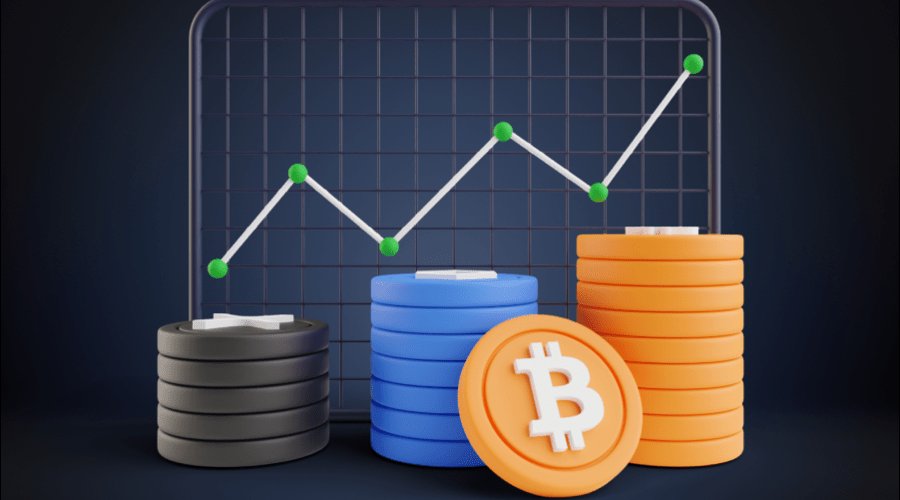In the world of cryptocurrency, staking has emerged as an increasingly popular method for investors to participate in blockchain networks and earn passive income. However, like any investment opportunity, staking carries its own set of risks and considerations that need to be understood before diving in. In this article, we will explore the concept of staking, highlight the potential risks involved, and discuss important factors to consider when engaging in staking activities.
Introduction
With the rise of blockchain technology, new consensus mechanisms have been introduced as alternatives to the traditional Proof of Work (PoW) system used in cryptocurrencies like Bitcoin. One such mechanism is Proof of Stake (PoS), where participants can stake their coins to support the network’s operations and secure transactions. Stakers are rewarded with additional coins for their contribution, making staking an attractive investment strategy.
What is Staking?

Staking is a process that allows individuals to participate in and support blockchain networks by holding and “staking” their cryptocurrency. It is an alternative consensus mechanism to traditional mining, commonly associated with proof-of-work (PoW) systems. In staking, participants are validators who help validate transactions and secure the network by locking up a certain amount of their cryptocurrency as collateral.
Stakers select a suitable staking platform or service provider that supports the cryptocurrency they wish to stake. Staking platforms facilitate the staking process, handle the technical aspects, and distribute staking rewards. Stakers set up a digital wallet compatible with the staking token. This wallet is used to store and manage the cryptocurrency they intend to stake. It is essential to choose a secure wallet that provides control over private keys.
Proof of Stake
Proof of Stake is a consensus algorithm that selects validators based on the number of coins they hold and are willing to lock up as collateral. This method eliminates the need for extensive computational power required in Proof of Work, making it more energy-efficient and cost-effective.
Benefits of Staking
Let’s explore some of the advantages of staking:
- Passive Income: Staking allows investors to earn passive income by holding and staking their cryptocurrency. By participating in the network’s consensus mechanism, stakers are rewarded with additional coins. These rewards serve as a form of income, allowing investors to grow their wealth without actively trading or engaging in other complex investment strategies.
- Supporting Network Operations: When investors stake their coins, they contribute to the overall operations of the blockchain network. By becoming validators, they help confirm transactions, maintain network security, and participate in the consensus process. This active involvement strengthens the network’s infrastructure and decentralization.
- Long-Term Investment Strategy: Staking is often considered a long-term investment strategy. By staking their coins and earning rewards, investors can accumulate more cryptocurrency over time. This approach allows them to potentially benefit from the growth and adoption of the blockchain project they are staking on, leading to capital appreciation.
- Inflation Hedge: Some blockchain networks have built-in inflation mechanisms to incentivize staking. As new coins are minted and distributed as rewards, stakers have the opportunity to offset the effects of inflation. By earning staking rewards, investors can maintain the purchasing power of their staked coins in an inflationary environment.
- Eco-Friendly Alternative: Staking is considered a more environmentally friendly alternative to traditional mining, which relies on extensive computational power. Proof of Stake (PoS) consensus mechanisms, used in staking, consume significantly less energy compared to Proof of Work (PoW) algorithms. By participating in staking, investors contribute to a greener and more sustainable blockchain ecosystem.
Staking Risks
Staking in cryptocurrencies and blockchain networks comes with certain risks that investors should be aware of. Understanding these risks is crucial for making informed decisions and implementing appropriate risk management strategies. Here are some common risks associated with staking:
- Market Volatility: Cryptocurrency markets are known for their volatility. The value of the cryptocurrency you stake can fluctuate significantly, potentially resulting in gains or losses. Market volatility can impact the value of your staked coins and affect the overall returns from staking.
- Technical Risks: Staking involves interacting with blockchain networks and staking platforms. Technical risks such as software bugs, network congestion, and downtime can impact the staking process and potentially lead to financial losses. It’s advisable to choose reputable platforms and stay informed about any technical updates or issues.
- Regulatory and Legal Risks: The regulatory landscape surrounding cryptocurrencies and staking is still evolving. Changes in regulations or unforeseen legal hurdles can pose risks to stakers. It’s essential to stay informed about the legal implications and comply with the relevant regulations in your jurisdiction.
- Security Risks: Staking involves managing private keys and interacting with digital wallets, which makes security a critical concern. Stakers should take necessary precautions to protect their assets from hacks, phishing attacks, and other security breaches. Using hardware wallets and following best security practices can mitigate some of these risks.
- Slashing Risks: In some proof-of-stake (PoS) systems, there is a risk of having a portion of your staked coins “slashed” or taken away as a penalty for malicious behavior or network rule violations. Stakers need to be aware of the specific slashing conditions of the project they are staking on and adhere to the rules to avoid potential penalties.
Considerations for Staking
Here are some key considerations for staking:
- Choosing the Right Staking Platform: Selecting a reputable and secure staking platform is crucial. Conduct thorough research, read user reviews, and consider factors such as platform fees, user interface, customer support, and the platform’s track record. Choosing a reliable platform ensures a smooth and secure staking experience.
- Evaluating the Project: Before staking your coins, evaluate the project behind the cryptocurrency you intend to stake. Consider factors such as the team’s credibility, project roadmap, partnerships, and community engagement. A well-established and promising project is more likely to offer long-term rewards.
- Rewards and Returns: Different staking platforms and cryptocurrencies offer varying rewards and returns. Research and compare the staking rewards, annual percentage yield (APY), and other incentives provided by different projects. Understanding the potential returns will help you make informed decisions and choose the most rewarding staking opportunities.
- Staking Duration: Staking duration can vary depending on the project and its requirements. Some projects have a fixed staking period, while others allow flexibility. Consider your investment goals and the duration you are comfortable locking your funds. Longer staking periods often offer higher rewards but come with reduced liquidity. Assess your financial needs and align them with the staking duration.
- Risk Assessment: Assess the risks associated with staking, including market volatility, technical issues, regulatory changes, and security vulnerabilities. Understand the potential risks and determine your risk tolerance. This will help you make informed decisions and implement appropriate risk management strategies.
Diversification and Risk Management
Diversification is a crucial strategy in managing staking risks. Instead of staking all your funds in a single project, consider spreading your investments across multiple projects. This approach helps mitigate the impact of potential losses in one project and ensures a more balanced portfolio.
It’s also important to allocate only a portion of your overall investment portfolio to staking. By diversifying your investments across different asset classes, you reduce the overall risk exposure and maintain a more resilient investment strategy.
Conclusion
Staking can be a rewarding investment strategy, allowing investors to earn passive income and actively contribute to blockchain networks. However, it’s essential to be aware of the risks involved and consider various factors before staking your funds. By understanding the market dynamics, evaluating projects, and adopting risk management strategies, you can navigate the world of staking more effectively.
FAQs
What is the difference between staking and mining?
Staking and mining are both methods used to support blockchain networks, but they differ in their underlying principles. Staking involves holding and locking a certain amount of cryptocurrency to participate in the network’s consensus mechanism and earn rewards. On the other hand, mining involves solving complex mathematical problems using computational power to validate transactions and secure the network.
Can I unstake my funds anytime?
The unstaking process varies depending on the staking platform and the project’s requirements. Some platforms have lock-up periods where funds are inaccessible for a certain duration. It’s crucial to familiarize yourself with the unstaking rules and understand any potential penalties or restrictions before staking your funds.
What happens if the staking platform shuts down?
In the event that a staking platform shuts down, there can be risks of losing access to your staked funds. It’s important to choose reputable platforms with a proven track record and consider using decentralized staking solutions. Being vigilant and staying informed about platform updates can help mitigate the risks associated with platform shutdowns.
Is staking considered a safe investment?
Staking carries inherent risks, as with any investment. The risks can include market volatility, technical issues, regulatory changes, and security breaches. However, by conducting thorough research, choosing reliable platforms, diversifying investments, and implementing appropriate security measures, staking can be a relatively safe and rewarding investment strategy.
Can I lose my staked funds?
While staking offers potential rewards, there is a risk of losing the staked funds. Factors such as market volatility, technical issues, regulatory changes, and security breaches can result in financial losses. It’s crucial to assess the risks, choose reputable platforms, and implement risk management strategies to minimize the chances of losing your staked funds.









